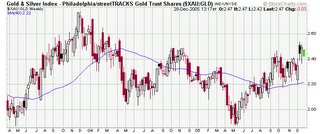More on trending.
1. When $compx:tlt > 7d average and 28d average (uptrend):
108 days with a) cumulative return of 29.8%, and b) t+1 cumulative returns of 6.4%. t+1: 62 up days, 46 down days. average t+1 up day: 0.58%, average t+1 down day -0.64%
2. When $compx:tlt < 7d average and 28d average (downtrend):
102 days with a) cumulative return of -21.3%, and b) t+1 cumulative returns of -0.7%. t+1: 56 up days, 46 down days. average t+1 up day: 0.6%, average t+1 down day -0.76%.
3. When $compx:tlt = neutral: 42 days with a) cumulative return of -1.9%, and b) t+1 cumulative returns of -3.0%. t+1: 19 up days, 22 down days. average t+1 up day: 0.5%, average t+1 down day -0.54%.



















